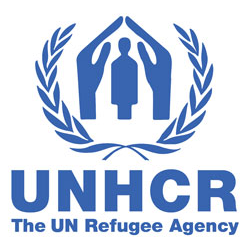EU Documents
- European Asylum Support Office (EASO), ‘Annual Report on the Situation of Asylum in the European Union for 2012’.
- European Asylum Support Office (EASO), ‘Annual Report on the Situation of Asylum in the European Union and on the Activities of the European Asylum Support Office for 2011’.
- Regulation (EU) No. 439/2010 of the European Parliament and of the Council of 19 May 2010 establishing a European Asylum Support Office, OJ L 132/11, 19 May 2010.
- European Council, ‘The Stockholm Program – An Open and Secure Europe Serving and Protecting Citizens’, OJ C 115/1, 4 May 2010.
- European Commission, ‘Delivering an Area of Freedom, Security and Justice for Europe’s Citizens – Action Plan Implementing the Stockholm Programme’, COM (2010) 171, 20 April 2010.
- Treaty on the Functioning of the European Union, Title V, Chapter 2, Consolidated version, OJ C 83/47, 30 March 2010, p. 75.
- Treaty of the European Union, Consolidated version, OJ C 83/13, 30 March 2010.
- Protocol No 24 on Asylum for Nationals and Member States of the EU, OJ C 83/305, 30 March 2010.
- The Charter of Fundamental Rights of the EU (including notably Arts. 18 and 19), OJ C 83/389, 30 March 2010.
- European Parliament, Policy Department, Citizens’ Rights and Constitutional Affairs, ‘Setting up a Common European Asylum System - Study’, 2010.
Readings
Core
- S. Peers, ‘Mission accomplished? EU Justice and Home affairs law after the Treaty of Lisbon’, Common Market Law Review, vol. 48, no. 3 (2011), pp. 661-693.
- A. Missiroli, J. Emmanouilidis, ’Implementing Lisbon: the EU’s Presidency’s other (rotating) half’, Paper European Policy Centre, December 2009.
- F. Ippolito & S. Velluti, ‘The Recast Process of the EU Asylum System: A Balancing Act Between Efficiency and Fairness’, Refugee Survey Quarterly, vol. 30, no. 3 (2011), p. 24-62.
- C. Kaunert & S. Léonard, ‘The European Union Asylum Policy after the Treaty of Lisbon and the Stockholm Programme: Towards Supranational Governance in a Common Area of Protection?’, Refugee Survey Quarterly, vol. 31, no. 4 (2012), p. 1-20.
Extended
- H. Battjes, European Asylum Law and International Law (Leiden/Boston: Martinus Nijhoff Publishers, 2006), Chapter 2.
- F. Comte, ‘A New Agency Is Born in the European Union: The European Asylum Support Office’, European Journal of Migration and Law, vol. 12, no. 4 (2010), p. 373-405.
- S. Peers, E. Guild, V. Moreno-Lax and M. Garlick (eds), EU Immigration and Asylum Law, Volume 3 (Brill, forthcoming)
- M. Garlick, ’Strengthening refugee protection and meeting challenges: the European Union’s next steps on asylum’, Migration Policy Institute Europe Policy Brief, June 2014.
- E. Collet, ‘The European Union’s Stockholm Program: Less Ambition on Immigration and Asylum, But More Detailed Plans’, Migration Information Source, January 2010.
- J. Pirjola, ‘European Asylum Policy – Inclusions and Exclusions under the Surface of Universal Human Rights Language’, European Journal of Migration and Law, vol. 11, no. 4 (2009), pp. 347–366.
- ECRE, Comments on the Proposal for a Regulation establishing a European Asylum Support Office, 29 April 2009.
Editor’s Note
The Court of Justice of the European Union (CJEU) has pronounced itself on a number of important questions of interpretation related to the core legal measures adopted as part of the CEAS. We can expect over the next years that important further legal questions relating to the CEAS in application will come before the Court. The rules on access to the CJEU changed in 2009 when the Lisbon Treaty created two new treaties and the restrictions precluding lower courts from referring questions to the CJEU were lifted. Among the outstanding questions is how the CJEU will interpret the CEAS in the light of the 1951 Geneva Convention; and also in light of the EU Charter of Fundamental Rights.
The Treaty of Lisbon amended the Treaty on European Union (TEU), which retains its name, and the Treaty Establishing the European Community (TEC), which is renamed as the Treaty on the Functioning of the European Union (TFEU).
The legislative procedure for measures in the CEAS now follows the normal EU procedures of co-decision with the European Parliament. The Commission, as guardian of the Treaties, is responsible for ensuring that there is a common application of the CEAS in the Member States. The Commission has begun a number of enforcement procedures against Member States for failure to comply with the CEAS, which initially focussed on non-transposition, but increasingly seek to address suspected violations of or failures to fulfil the substantive requirements of the asylum acquis.



